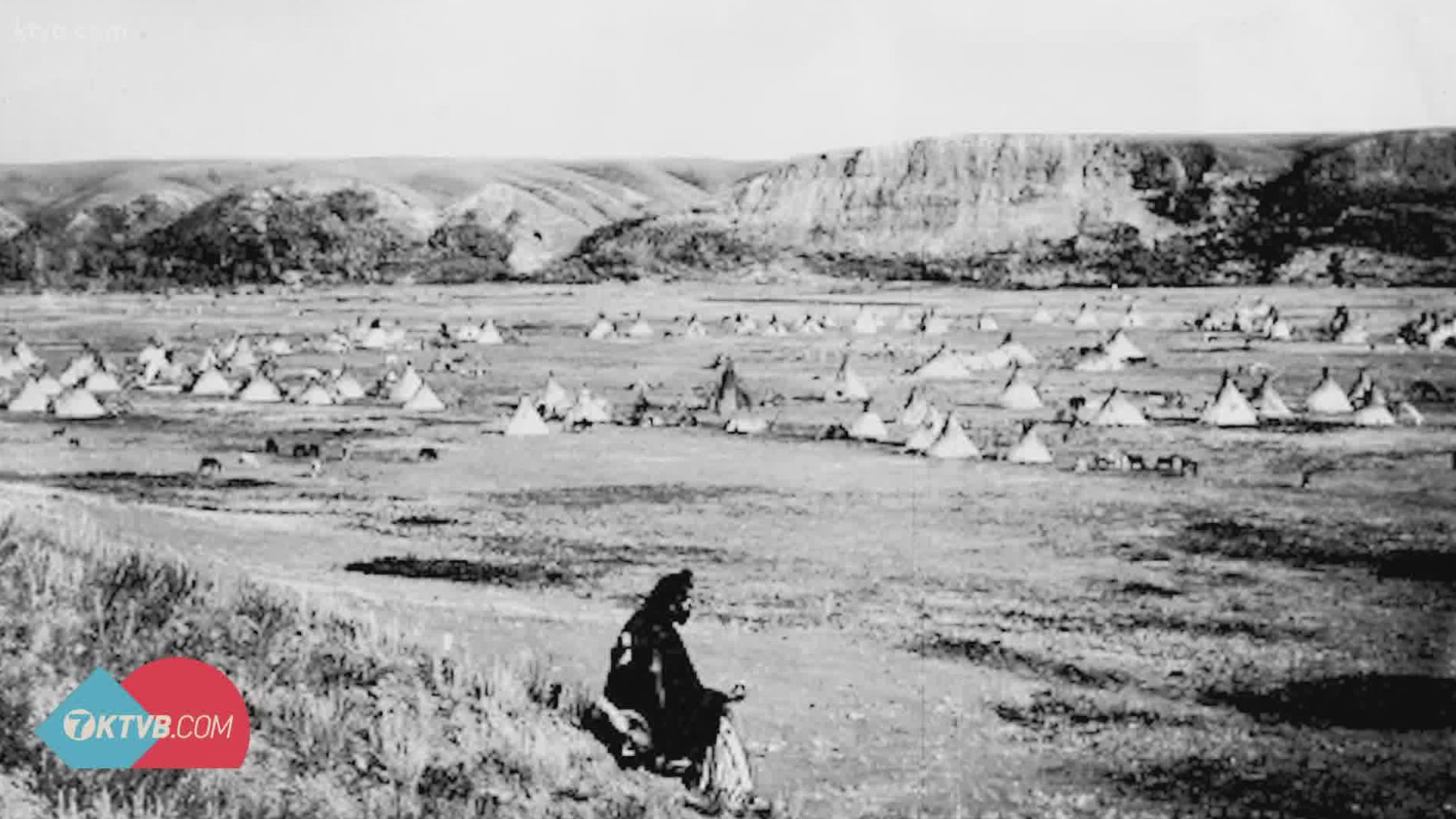PRESTON, Idaho — As the Civil War raged on the south, a different kind of battle was being fought in Utah.
In 1862, California's 3rd regiment volunteer infantry was sent to Utah for two reasons; to protect mail routes in the territory and to make sure the Church of Latter-day Saints (LDS) did not cede from the union.
"They were sent to babysit the Mormons and, look, they hated each other," Darren Parry, author of The Bear River Massacre: A Shoshone History, said.
As the infantry built and developed Fort Douglas outside of Salt Lake City, the soldiers ended up developing a relationship with members of the church, one based on their hatred of Native Americans.
At that time, the Shoshone Tribe occupied a majority of the land in the area. They once spread their 17,000 people across parts of Nevada, Utah, Wyoming and Idaho.
The Shoshone Tribe moved with the seasons, and in the winter, many of them would settle into the Cache Valley, which goes roughly from Logan, Utah into and around Preston, Idaho. That is where the deer and elk would go and the Bear River was filled with fish.
The Shoshone Tribe called that river Boa Ogoi, or 'the Big River.'
That area piqued the interest of the Mormon pioneers because of its plush resources.
In 1855, Mormons began moving into the Cache Valley where the Shoshone Tribe laid claim.
By 1863, thousands had moved to the area, setting up fences and claiming the land as theirs.
"That depletion of resources really put an end to our people's way of life," Parry said. "It was really the only way we knew how to live."
Parry, who is a direct descendent of chief Sagwitch of the Shoshone Tribe, said the only way of life his people knew was being taken away from them.
"I tell people we had three options: beg for food, starve or steal and I'm sure they did all three," Parry said.
That caught the attention of the 3rd regiment.
On January 24, 1863, 275 members marched north from Salt Lake City under the command of Colonel Patrick Connor.
"When Connor left Salt Lake City he had arrest warrants in his hand for the chiefs Pocatello, Sagwitch, and Bear Hunter," Parry said. "(Connor) said, 'I'm not going up there to arrest anyone, I'm not going to deprive my men of a little fun of Indian killing.'"
In his report to his U.S. Army Marshall two weeks later, Colonel Connor said despite the stated purpose of his orders, that it was "not his intention to take any prisoners, but that he could accompany me."
"So he knew in his mind what he was going to do and he actually did it," Parry said.
The regiment found the Shoshone Tribe in their winter camp along the Bear River.
At daylight on January 29, 1863, the regiment attacked the village. Some were able to run and hide out along the icy river. Others were not able to escape.
One of the survivors included chief Sagwitch's 12-year-old son, Jaeger, who survived by playing dead.
Parry said his grandmother, Mae Timbimboo Parry, would tell him the story of Jaeger as a child.
The massacre lasted about four hours.
"Three Mormon men at the direction of Brigham Young went in the next day to look for survivors and count the dead," Parry said. "And all of them had counts counted over 450 which they wrote down in their journals and reported back to Brigham Young. They said two-thirds of that number were women and children."
To date, the Bear River Massacre remains the deadliest attack on Native Americans in U.S. history.
"Why do you think it's taken so long to get this attention or it isn't as well known as you'd like it to be?" KTVB's Brian Holmes asked.
"You know, I think early on, historians have said, 'well, it was during the civil war' and just the news, there wasn't any news outlets out here other than the Deseret News which, they're not going to report on what happened, I mean it was kind of a black eye for the locals here," Parry said.
Parry said one day in the Cache Valley, an older woman approached him.
"(She said)' when I was a little girl, my great grandfather told me never to talk about it,' and so I think the saints, the local saints, felt a little guilt by having the army come take care of the Indian problem, realizing now what that really meant. They weren't proud of it and they have some responsibility in it and so you just never really talk about it."
Parry said that is why he thinks it is important to continue telling this story, especially in today's environment.
"Look we all are going to go through hard things, we're all going to go through things that are hard to discuss and talk about, that one terrible event shouldn't define us and I want people to know you can talk about something hard but then let's talk about what we can do together to make this world a better place."
Darren Parry, who is also the former chairman of the Northwestern Band of the Shoshone Nation, will be speaking at the Idaho State Museum Thursday, January 27 from 6-7:30 p.m.
The event is free and open to the public.
Join 'The 208' conversation:
- Text us at (208) 321-5614
- E-mail us at the208@ktvb.com
- Join our The 208 Facebook group: https://www.facebook.com/groups/the208KTVB/
- Follow us on Twitter: @the208KTVB or tweet #the208 and #SoIdaho
- Follow us on Instagram: @the208KTVB
- Bookmark our landing page: /the-208
- Still reading this list? We're on YouTube, too:

